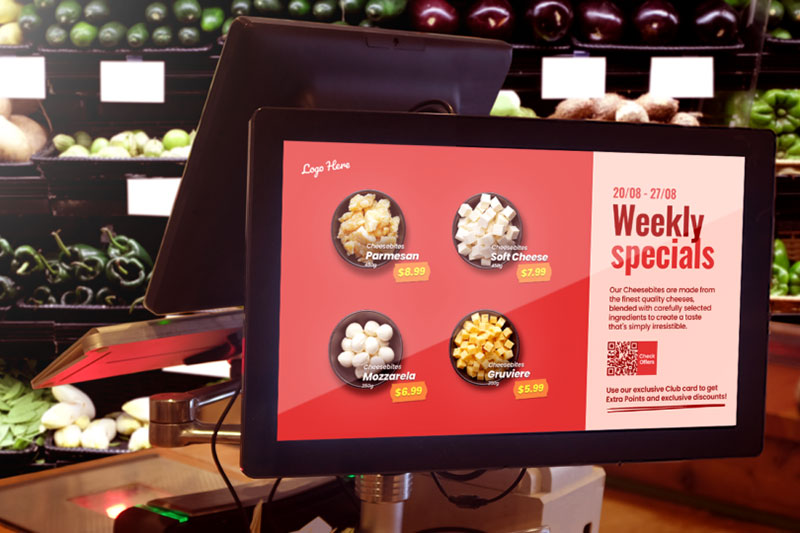Many retail marketers believe that impulse purchasing is one of the more important factors in their success in boosting sales. This can be due to anything from a catchy slogan, to an enticing promotion deal that is well-placed in their retail stores.
That’s where point-of-sale material (POSM) comes in.
In a recent UK survey about 65% of customers pointed to in-store marketing as the biggest influencer for their impulse buying. Similarly, a study by TKM Consultants showed that 75% of our purchases are made from in-store factors.
But even when it comes down to the nitty gritty details, there are many tactics you can use for your POSM that have been proven to increase purchases.
What is impulse purchasing?
As the name suggests, impulse purchases are done on a whim, without pre-planning or preparation. They are usually made in order to fulfil instant gratification. For instance, adding a bar of chocolate into your cart while queueing up to pay at the grocery store.
Unplanned purchases are not the same, in which a customer realizes that he or she needs something but didn’t plan on buying it when entering a store.
Whether you want more people coming through your doors or simply want them buying more on each visit, below are some ways you can get those results with the right POSM strategies:
1. Get the designs and copywriting right
To create POSMs that work effectively is to ensure that they command attention, have relevance to their target customers and communicate urgency.
Getting their attention means that your standees, wobblers or block displays use visuals, lighting and colours that stand out. At the same time, make sure that those elements are designed to communicate the brand clearly.
Perhaps the most crucial element to top all of that off is the copywriting. The right copy helps make the products on display relevant to the right customers by relaying benefits that uniquely meet their desires.
To prompt impulse purchasing, it is vital that the copy creates urgency so that customers feel that they have to buy the product immediately.
Source: Pinterest
Source: Pinterest
Source: Pinterest
2. Place products near one another that complement each other well
What goes well with bread? Butter, jam and Nutella. What goes well with chips? Perhaps salsa or hummus. How about ice cream? Ice cream cones. You get the idea. When you locate complementary items near each other, the purchase of one increases the likelihood that the complementary item gets purchased too.
It is also generally a good idea to put supplementary add-on items that are cheaper alongside larger purchases. For instance, if a customer had just committed to buying a printer, they’d need a stack of paper, and it’s maybe only 10-20% the price of the printer so why not. Might as well.
3. Create strategic POSM for travel sizes and samples
When customers have decided upon buying something from a store, they are likely going to buy additional items from that store. That’s where the genius of tiny commitments comes into play as they reduce friction in the sales process.
Travel sizes are cheaper than buying the full product. Customers would want to stock up on them for when they travel so it’s a ‘might as well’ situation for them. And once they’ve bought that, they’d be more inclined to buy at least something else from the store.
Besides that, samples are a good way to hook customers into making impulse purchases if they like whatever they’ve tried.
There needs to be specific POSM stations set up strategically to get customers to make the tiny commitment to samples or travel size items. A conspicuous, unmissable area near the entrance could do the trick.
Source: Pinterest
4. Place easy and attractive offers in traffic hotspot areas
Where do customers typically congregate in your store? The items in those areas usually get the most attention. But don’t just put some of your items in trays and hangsell displays near checkouts. Many other brands are already doing that.
Instead use that space and opportunity to let your offers stand out from the competition. Do not make it complicated, as you wouldn’t want customers thinking too much about whether they should or should not buy your product.
Simple offers that can be grasped quickly work best. Think ‘buy one, free one’ type of deals. Make your product easy to grab even for a child. The goal is to reduce friction.
Making it easier to purchase on a whim
If you want your business to grow in sales, don’t underestimate the use of POSM. It is a simple but effective component that has been widely used to get people interested and buying products on impulse.
There are many other factors that influence how POSM can encourage impulse purchasing from customers, including discounts, limited time offers, or even samples for customers who may not know what they want yet but have been attracted by something intriguing at the checkout line.
Is there any other way POSM can induce impulse purchasing that we didn’t cover in the article? Let us know!







